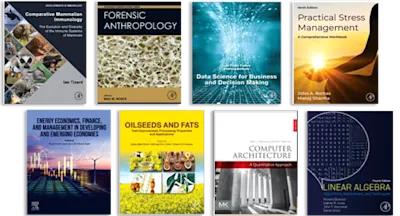
Restoring Justice
An Introduction to Restorative Justice
- 4th Edition - June 25, 2010
- Imprint: Anderson
- Authors: Daniel W. Van Ness, Karen Heetderks Strong
- Language: English
- eBook ISBN:9 7 8 - 1 - 4 3 7 7 - 7 8 9 7 - 7
Restoring Justice provides a comprehensive introduction to the theory and practices of restorative justice. The book reflects the profuseness of the restorative justice approach,… Read more
Purchase options

Restoring Justice provides a comprehensive introduction to the theory and practices of restorative justice. The book reflects the profuseness of the restorative justice approach, by presenting the process analyses with clinical relevance and theoretical thinking, along with ethical and social significance. The book also explores the principles of juridical options and a broad sociological context analysis. The book is divided into three parts, comprised of 10 chapters. The first part provides an overview of the concept of restorative justice starting with a discussion about visions and patterns, and a review of how these two factors can obstruct justice. The second chapter discusses the history of restorative justice and the way it developed into a new pattern of thinking. The first part of the book also covers the principles and values of restorative justice and presents a visual model of its practices. The second part of the book includes chapters 4 to 7, which feature the cornerstones of restorative justice: encounter, amends, reintegration and inclusion. The last part of the book, which is comprised of chapters 8 to 10, presents the challenge of restorative justice in a contemporary criminal justice setting. The book also features appendices that present a case study and a list of Internet resources on topics in restorative justice. Restoring Justice is an excellent resource for students and professionals in the criminal justice field. Non-experts who are interested in the complex world of restorative justice history, processes, and ideas will also find this book invaluable.
- Van Ness and Strong are renowned scholars in the field of restorative justice.
- Appendices include a case study to help illustrate the concepts of the text and internet resources on topics in restorative justice.
Students and professionals in the criminal justice field.
Dedication
Comments on Previous Editions of Restoring Justice
Foreword
Part One The Concept of Restorative Justice
Chapter 1 Visions and Patterns: How Patterns of Thinking can Obstruct Justice
An Ancient Pattern
A Shift in Thinking
Critiques Pointing to a New Pattern
Conclusion
Notes
Chapter 2 A Brief History of Restorative Justice: The Development of a New Pattern of Thinking
The Term “Restorative Justice”
Explorers of Restorative Justice Theory
Programs Offering Restorative Processes
Incorporation of Restorative Justice into Criminal Justice Systems
Timeline of Significant Developments Related to Restorative Processes
Conclusion
Notes
Chapter 3 Restorative Justice: Justice That Promotes Healing
Definition of Restorative Justice
Principles of Restorative Justice
Values of Restorative Justice
Restorative Justice or Restorative Practices?
Restorative Justice as Opposed to What?
Does Restorative Justice Work?
Restorative Justice: A Visual Model
Conclusion
Notes
Part Two The Cornerposts of Restorative Justice
Chapter 4 Encounter
Mediation
Conferencing
Circles
Impact Panels
Elements of Encounter
Issues
Conclusion
Notes
Chapter 5 Amends
Apology
Changed Behavior
Restitution
Generosity
Issues Related to Restitution
Conclusion
Notes
Chapter 6 Reintegration
Victims
Offenders
Reintegration
Building a Reintegrative Response
Reintegrating Communities
Conclusion
Notes
Part Three The Challenge of Restorative Justice
Chapter 8 Making Restorative Justice Happen
Building Support for Restorative Justice
Develop a Credible Coalition
Pursue Strategic Goals
Revisit the Vision and Evaluate Impact
Realign Vision and Practice
Stay Connected
Expect Resistance
Conclusion
Notes
Chapter 9 Toward a Restorative System
Uses of Restorative Justice Processes in Contemporary Criminal Justice
Five System Models and “Restorativeness”
A Framework for Assessing the “Restorativeness” of a System
Conclusion
Chapter 10 Transformation
Transformation of Perspective
Transformation of Structures
Transformation of Persons
Notes
Appendix 1 RJ CitySM Case Study: When Ed and David Broke into Mildred’s House and Took Things
Appendix 2 Internet Resources on Topics in Restorative Justice
Select Bibliography
Subject Index
Author Index
- Edition: 4
- Published: June 25, 2010
- Imprint: Anderson
- Language: English
DV
Daniel W. Van Ness
Daniel Van Ness is Vice President of Programmes at Prison Fellowship International, an association of national NGOs in more than 125 countries that assist prisoners, ex-prisoners, victims, and their families. For 30 years, he has explored and promoted restorative justice as public policy advocate, program designer, writer, and teacher. He is the author and editor of a number of publications on restorative justice and has presented nearly 30 papers at national and international conferences on themes related to restorative and community justice. Since 2000, he has taught a biennial Intensive Course on Restorative Justice at Pepperdine University Law School’s Straus Institute for Dispute Resolution. The National Association of Community and Restorative Justice honored Van Ness with the John W. Byrd Pioneer Award for Community and Restorative Justice in 2013.
Affiliations and expertise
Prison Fellowship InternationalKS
Karen Heetderks Strong
Karen Heetderks Strong is a consultant on criminal justice reform and conflict resolution. She spent the majority of her career in an American non-profit organization serving prisoners, ex-prisoners, victims, and their families and supporting advocacy for reforms in the state and federal criminal justice systems. In addition to her work in helping envision and articulate restorative justice, Strong guided program development in such areas as mentoring for youth at risk and a re-entry model for Michigan prisoners returning to Detroit. She also evaluated and helped shape the pilot of a faith-based victim assistance program model. As a senior leader, she guided a number of organizational efforts aimed to increase the effectiveness of volunteers in serving those affected by crime and prison. Strong earned a Ph.D. and an M.Phil. from Drew University, a graduate Diploma from the University of Oxford, and a B.A. from Seattle Pacific University.
Affiliations and expertise
Consultant on Criminal Justice Reform and Conflict Resolution